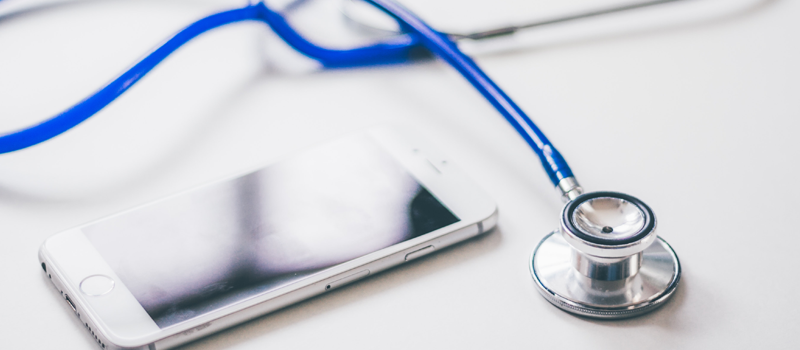
Smartphones have become a staple technology in our daily lives. Since the release of the first iOS-powered iPhone in 2007 and Android-powered HTC Dream in 2008, billions of people have adopted such technology. As of 2019, there are at least 3 billion smartphone users globally and it is expected to reach 3.8 billion in 2021 [1].
Aside from having critical mass, a smartphone’s portability and ever-increasing computing power (see Moore’s Law) make it a seamless device that facilitates both day-to-day personal and work-related activities. While organizations are concerned, when smartphones are used by employees for personal purposes, its work-related use proves to be an organizational challenge, primarily because of privacy and security issues. Faced with the reality of smartphone consumerization (i.e., employees using their smartphones for work-related tasks), how should organizations respond to it? This question has baffled several industries, but healthcare, one of the most crucial industries, should address this question.
Smartphone Consumerization in Healthcare Settings
Smartphone consumerization is one driver, if not the most influential, of bring-your-own-device (BYOD) policies in hospitals for the past decade. Although laptop computers have traditionally dominated the BYOD discourse, it is the smartphone that drives such discussion nowadays, particularly within healthcare organizations. This is expected, as there is a growing number of clinicians who find their smartphones as a useful device to facilitate clinical work, and it is much more portable to carry than a laptop.
Although smartphone consumerization has its drawbacks (e.g., privacy and security issues for both the employee and the organization), research suggests that the smartphone is an indispensable device for clinical work. For instance, a 2015 survey found that more than 95 percent of U.K. doctors and nurses owned a smartphone and 92.6 percent of these doctors and 53.2 percent of these nurses found it useful in their clinical work [2]. Halfway around the globe, nurses in the Philippines use their smartphones for clinical communication, information seeking, and documentation to compensate for the lack of reliable health information technologies (HITs) in their hospitals [3]. Similar studies in the U.S. [4] and Italy [5] also show that clinicians use their smartphones to communicate with patients as well as healthcare colleagues.
Beyond its usefulness, it is important to note that the prevalent use of smartphones for clinical work is a consequence of a healthcare organization’s lack of resources to provide such technology or similar device. While some hospitals are now investing in integrating smartphones to enhance their clinical communication systems to curb the use of personal devices [6], most hospitals in developing countries would find such strategy difficult to implement. In a situation where clinicians are dependent on their smartphones for clinical work and the organization is not able to provide such technology, what should healthcare administrators do?
Approaches That Healthcare Organizations Can Consider
Here, I provide three approaches that healthcare administrators can consider to respond to smartphone consumerization. These were based on my doctoral research regarding nurses in the Philippines who use their own smartphones for work purposes. [7] While these approaches are specific for healthcare organizations, especially those in developing countries, these can also be adopted by administrators from non-healthcare organizations.
Approach #1: Do Not Implement a Smartphone Blanket Ban
It is important to note that a blanket ban on personally-owned smartphones is futile when such device (or any of its equivalent) is not provided to clinicians. While a blanket ban may be implemented on the grounds of mitigating privacy and security concerns, this may backfire since it can prevent clinicians from facilitating efficient and effective communication with the healthcare team (especially during emergency cases), thus leading to poor patient care [3]. Considering that smartphones can serve as a bridge to overcome a hospital’s technological deficits, it is simply unrealistic to implement such policy [8].
Approach #2: Improve Existing Technologies
By principle, the hospital should provide all technologies required by clinicians for them to facilitate clinical work. If smartphones, including relevant enterprise software, cannot be provided, hospital administrators can improve existing technologies in the hospital to reduce smartphone use for some clinical tasks. For instance, corded telephones can be replaced with wireless ones so that clinicians can use them to communicate with colleagues instead of their smartphones [9]. Likewise, to mitigate information seeking via smartphone, clinical computers can be equipped with a secure Internet connection for information seeking.
Approach #3: Develop a Specific BYOD Policy
A BYOD policy that simply states that smartphones can be used for clinical work is vague. To prevent any organizational conflicts and confusion, such a policy needs to specify the dos and don’ts of smartphone use for clinical work. For instance, the policy can allow clinicians to use their smartphone for making or receiving work-related calls, or for web browsing to search for relevant clinical information [7]. On the other hand, using smartphones to take pictures within hospital premises and sending them via closed (e.g., WhatsApp and Facebook Messenger) and/or open (e.g., Facebook and Twitter) social media platforms can be prohibited.
Conclusion
Clinicians and healthcare administrators should work together to create a BYOD policy that is appropriate for their hospital’s situation. Ultimately, healthcare organizations need to acknowledge that smartphone consumerization is a reality that they should face, and smartphone policies need to be responsive so that it can be used to improve clinical work and patient care while mitigating privacy and confidentiality issues.
John Robert Bautista is a Bullard Postdoctoral Fellow in the School of Information, The University of Texas at Austin, and a 2019 PTC Young Scholar Program recipient. He received his Ph.D. in Communication Science from the Wee Kim Wee School of Communication and Information, Nanyang Technological University. His research examines the role and impact of ICTs, such as smartphones and social media, in healthcare and non-healthcare contexts. His research has appeared in top-tier communication and informatics journals, such as Computers in Human Behavior, Cyberpsychology, Behavior, and Social Networking, Health Communication, International Journal of Medical Informatics, Journal of Health Communication, and Journal of the American Medical Informatics Association.
You can visit his website https://jrbautista.wixsite.com/jrbautista for more information.
[1] Takahashi, D. (2018). Newzoo: Smartphone users will top 3 billion in 2018, hit 3.8 billion by 2021. Retrieved from https://venturebeat.com/2018/09/11/newzoo-smartphone-users-will-top-3-billion-in-2018-hit-3-8-billion-by-2021/
[2] Mobasheri, M. H., King, D., Johnston, M., Gautama, S., Purkayastha, S., & Darzi, A. (2015). The ownership and clinical use of smartphones by doctors and nurses in the UK: A multicentre survey study. BMJ Innovations, 1(4), 174-181.
[3] Bautista, J. R., & Lin, T. T. (2016). Sociotechnical analysis of nurses’ use of personal mobile phones at work. International Journal of Medical Informatics, 95, 71-80.
[4] Flynn, G. A. H., Polivka, B., & Behr, J. H. (2018). Smartphone use by nurses in acute care settings. CIN: Computers, Informatics, Nursing, 36(3), 120-126.
[5] De Benedictis, A., Lettieri, E., Masella, C., Gastaldi, L., Macchini, G., Santu, C., & Tartaglini, D. (2019). WhatsApp in hospital? An empirical investigation of individual and organizational determinants to use. PloS one, 14(1), e0209873.
[6] Spyglass Consulting Group. (2018). Study: Hospital IT smartphone investments are driving clinical transformation, says Spyglass Consulting Group. Retrieved from http://www.spyglass-consulting.com/press_releases/SpyglassPR_CLINICAL_COMM_2018.v1.0.pdf
[7] Bautista, J.R. (2019). Nurses’ use of smartphones for work purposes in the Philippines: Predictors, outcomes, and issues.Doctoral thesis. NTU, Singapore. https://doi.org/10.32657/10220/48111
[8] Jorm C. & Roper L. (2016) Errors related to personal mobile technology. In A. Agrawal (ed.) Safety of Health IT. Switzerland: Springer.
[9] Stephens, K. K. (2018). Negotiating control: Organizations and mobile communication. New York, NY: Oxford University Press.




